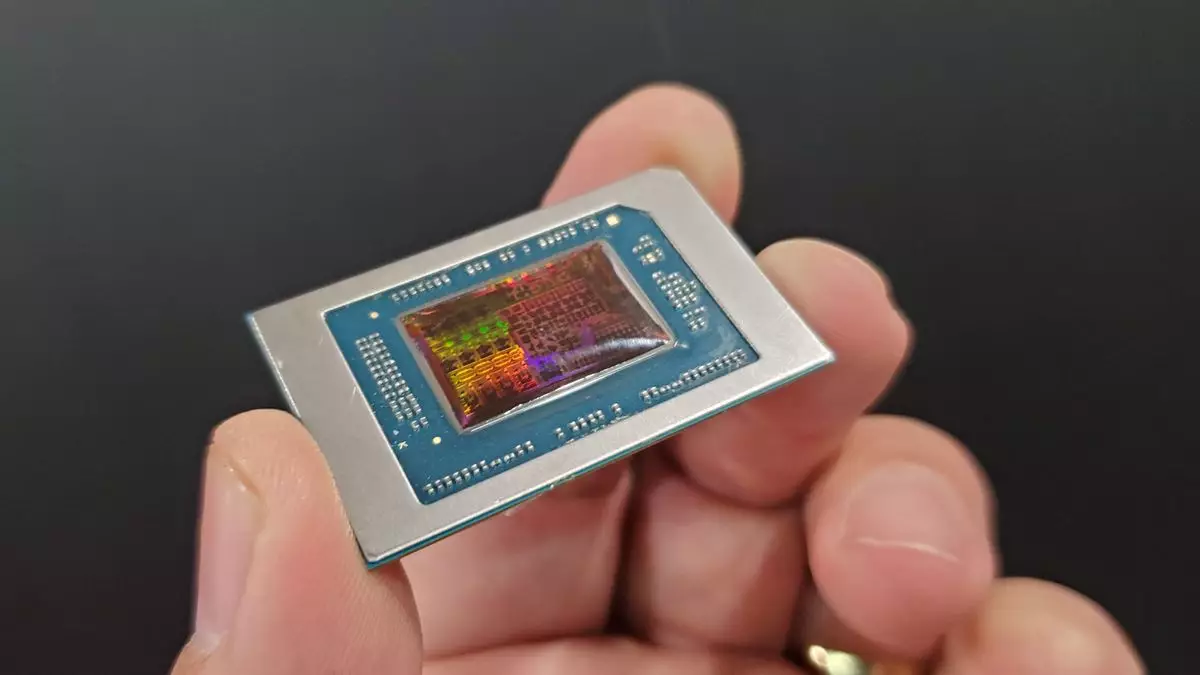AMD’s innovative Strix Point APU is gaining traction within the tech community, captivating the attention of performance seekers and casual users alike. Lauded for its exceptional capabilities in laptops and handheld gaming devices like the Razer Blade 16 and OneXPlayer OneXFly F1 Pro, this chip exemplifies the direction in which portable computing is heading. The excitement surrounding Strix Point doesn’t merely rest on its current applications; it extends to its potential desktop adaptations projected for Q4 2025, which hints at a broadening of its impact in various computing environments.
The anticipated desktop version, potentially dubbed the “Ryzen 9000G,” promises to elevate the substantial performance capabilities found in its mobile counterpart. Speculation suggests that AMD may even infuse the product line with artificial intelligence enhancements, possibly branding it as Ryzen AI 9000G. With such names, AMD signals its commitment to integrating intelligent processing into its designs, aiming at creating a more intuitive and responsive user experience.
Architecture Breakthroughs: Core Composition and Computing Power
At the heart of Strix Point is its impressive architecture, combining up to 12 Zen 5 cores. The strategic combination of four full Zen 5 cores with eight Zen 5c cores ensures that the chip not only offers robust performance but does so while maintaining efficiency. This dual structure allows for stellar multi-threading capabilities – essential for running demanding applications and multitasking seamlessly.
Graphics performance is equally noteworthy, as the Strix Point integrates 16 RDNA 3.5 graphics compute units alongside an NPU capable of executing 55 TOPS (Tera Operations Per Second). This combination positions Strix Point as more than just a CPU; it serves as a versatile hub for gaming, content creation, and artificial intelligence applications. Such specifications are particularly attractive to users who seek performance without the bulk of traditional desktop setups.
A Glimpse into Compatibility and Versatility
Strix Point’s compatibility with the AM5 socket opens up exciting avenues for users looking to upgrade their systems with AMD technology. As the existing AMD Ryzen 8000G series, which includes the Ryzen 7 8700G and Ryzen 5 8600G, already supports this socket, it indicates that Strix Point could easily be integrated with a vast array of existing AMD motherboards. This feature not only simplifies transitions for users looking to harness the power of the Strix Point but also underscores AMD’s commitment to backward compatibility.
While Strix Point offers robust performance capabilities, particularly for compact systems, it is crucial to view it through the lens of realistic expectations. For users seeking the ultimate gaming performance, a dedicated desktop CPU and GPU combination will still reign supreme. Nevertheless, the Strix Point APU shines in compact PC scenarios, exemplified by its applications in devices like the Ayaneo Retro Mini PC AM01S. When evaluating potential use cases, it starts to become clear that its strength lies not in trying to redefine gaming desktops but in enhancing the versatility of mini PCs.
Cost-Effectiveness and Future Prospects
Interestingly, another appealing aspect of the desktop version is its predicted cost-effectiveness compared to its mobile counterparts. It is widely recognized that mobile chips typically carry a higher price tag due to their advanced packaging and optimization for portability. Thus, the upcoming desktop variant of Strix Point is expected to deliver a compelling performance-to-price ratio, making it an attractive option for budget-conscious consumers who desire power in a small package.
With rumors swirling yet no official announcements regarding pricing and release dates, it remains a waiting game for enthusiasts. However, as we look toward late 2025, the excitement in the tech community only continues to build for what AMD has in store. Will Strix Point redefine the mini PC landscape and position AMD dominantly within the compact computing market? Only time will tell, but there’s ample reason to be optimistic about this clever little chip.


Leave a Reply